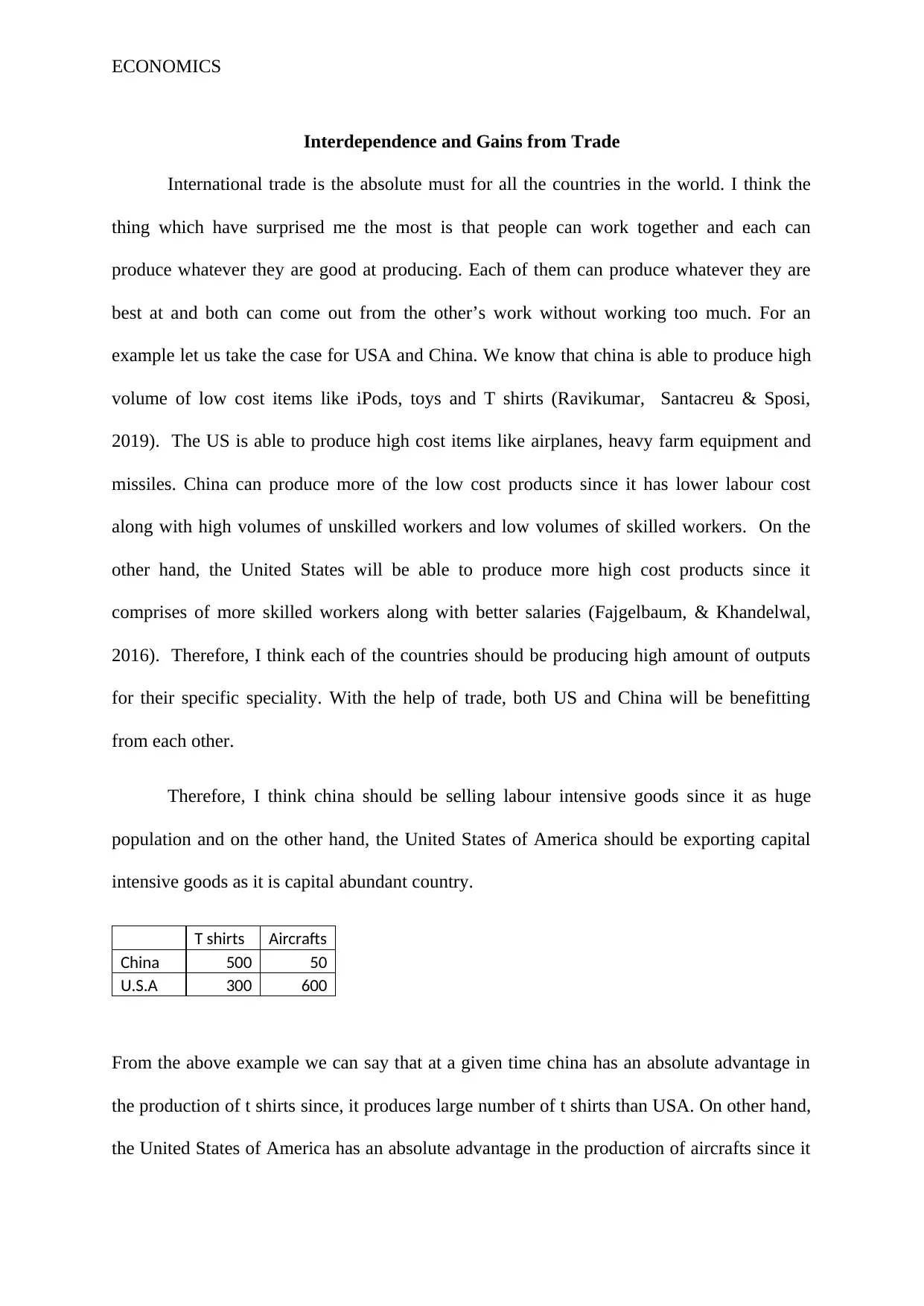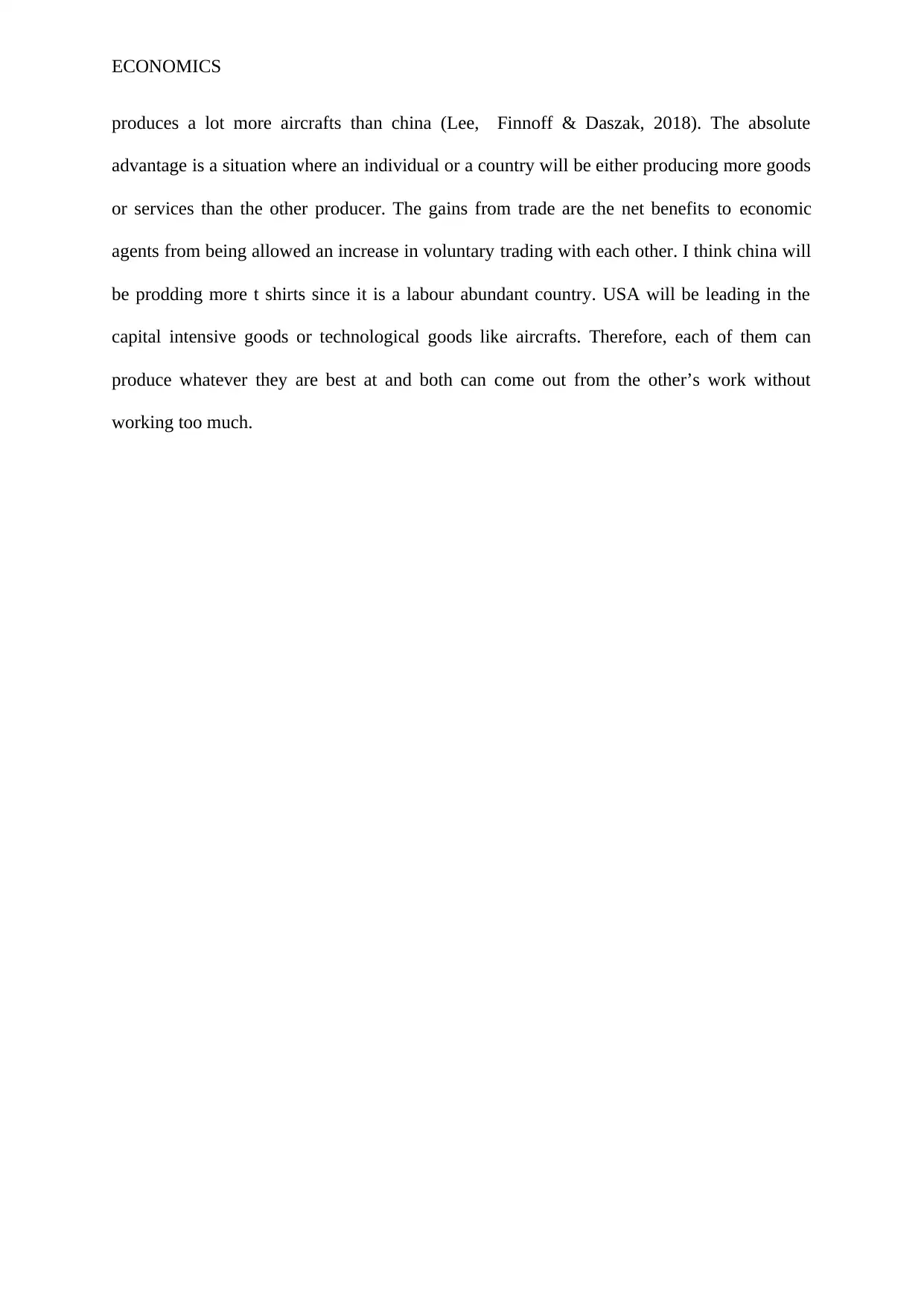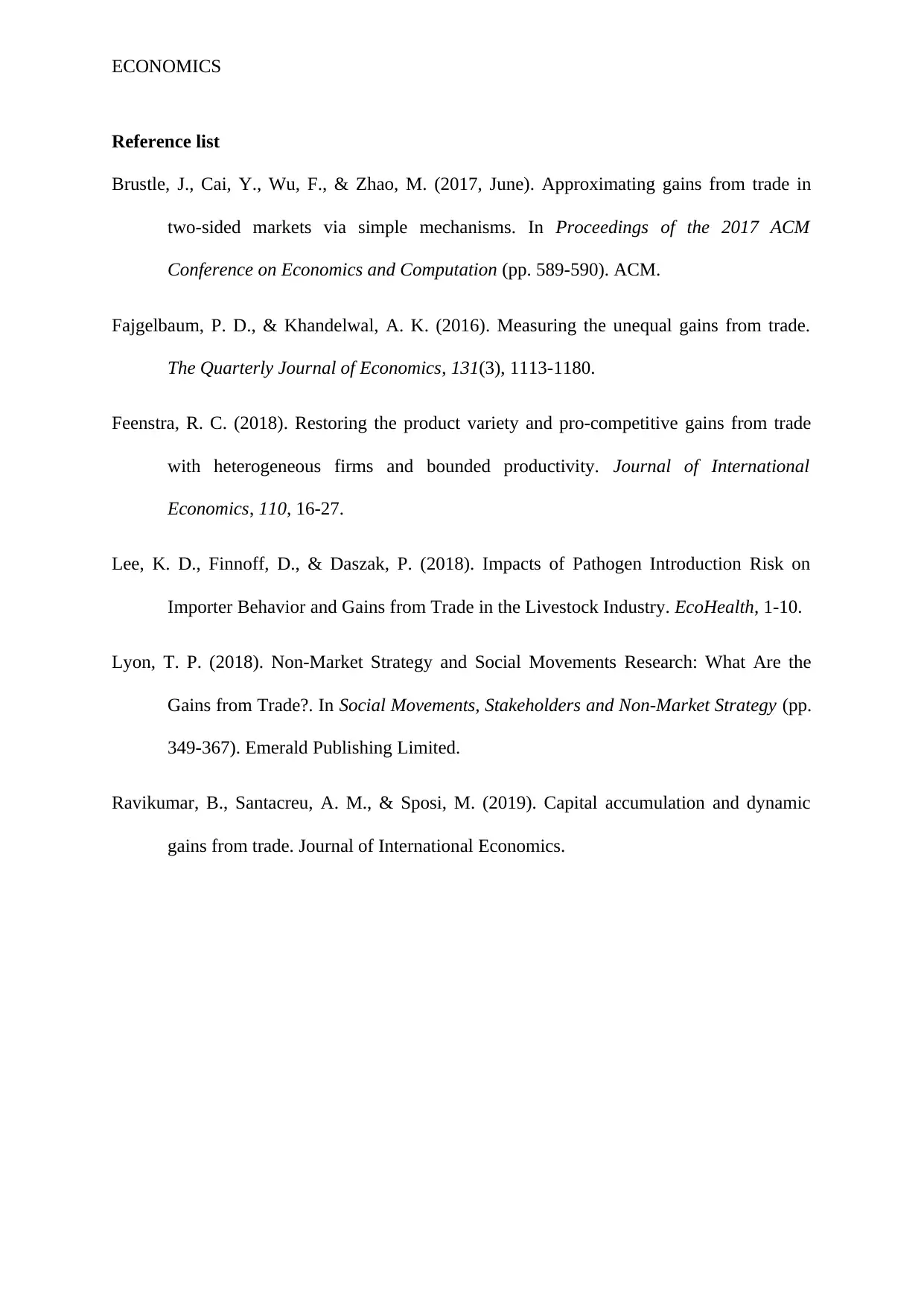Economics Assignment: Interdependence, Gains from Trade, and Examples
VerifiedAdded on 2023/01/03
|4
|715
|54
Homework Assignment
AI Summary
This economics assignment examines the concept of international trade and its benefits, focusing on interdependence and specialization between countries. The assignment uses the examples of the USA and China to illustrate how each country can benefit from trade by focusing on producing goods where they have an absolute advantage. China, with its lower labor costs, is shown to have an advantage in producing labor-intensive goods like T-shirts, while the USA, with its skilled workforce and capital, excels in producing capital-intensive goods like aircraft. The assignment explains absolute advantage and the gains from trade, emphasizing how both countries can benefit from exchanging goods they specialize in producing. The student provides references to support the analysis of the economic concepts.
1 out of 4











![[object Object]](/_next/static/media/star-bottom.7253800d.svg)